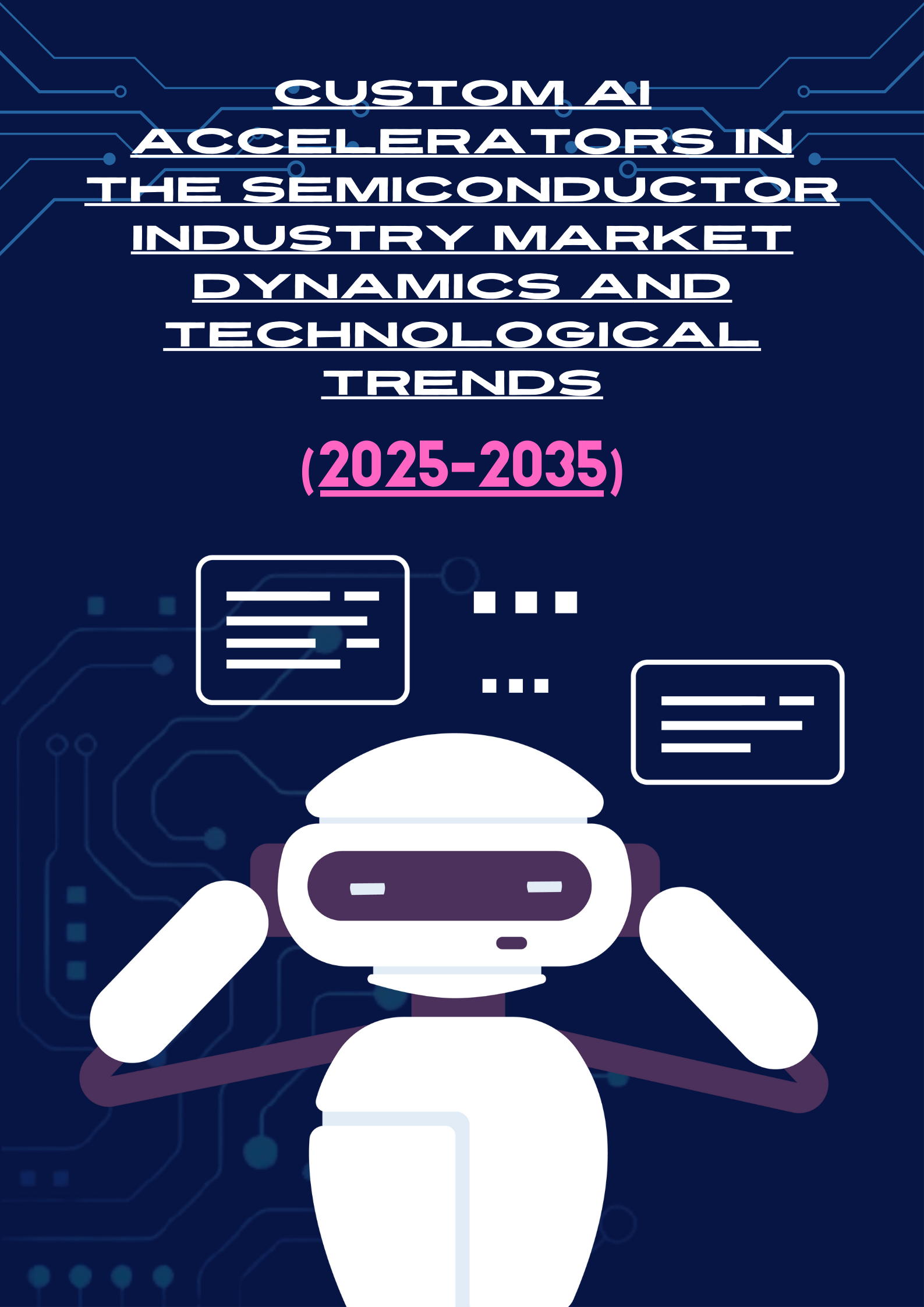1. Overview of Custom AI Accelerators
- Definition and purpose of AI accelerator chips
- Comparison with general-purpose GPUs and CPUs
- Key players in the custom AI chip market (without naming specific companies)
2. Technological Landscape
a. Architecture and Design Approaches
- ASIC-based designs
- FPGA implementations
- Hybrid architectures
b. Key Performance Metrics
- Compute performance (TOPS, FLOPS)
- Power efficiency (Performance per watt)
- Memory bandwidth and capacity
- Inference latency
c. Specialization vs. Flexibility
- Trade-offs between specialized and general-purpose designs
- Adaptability to different AI workloads
3. Market Dynamics for Custom AI Chips
a. Demand Drivers
- Cloud service providers’ needs
- Edge computing requirements
- Automotive and IoT applications
b. Competitive Landscape
- Established semiconductor companies
- Cloud hyperscalers developing in-house chips
- Startups and emerging players
c. Market Size and Growth Projections
- Current market valuation
- Growth forecasts (2025-2035)
- Segmentation by application and region
4. Comparison of Custom AI Chips with Traditional Solutions
a. Performance Benchmarks
- Inference speed and throughput
- Training capabilities
- Specialization for specific AI models
b. Total Cost of Ownership (TCO)
- Hardware costs
- Power consumption and cooling requirements
- Integration and deployment expenses
c. Ecosystem and Software Support
- Compatibility with popular AI frameworks
- Developer tools and SDKs
- Community support and resources
5. Use Cases and Applications
- Natural Language Processing (NLP)
- Computer Vision
- Recommendation Systems
- Autonomous Systems
6. Challenges and Limitations
- Design complexity and development costs
- Keeping pace with rapidly evolving AI models
- Scalability and flexibility concerns
- Talent acquisition and retention
7. Future Trends and Innovations
- Integration of AI accelerators in SoCs
- Advancements in packaging technologies
- Neuromorphic computing approaches
- Quantum-inspired AI architectures
8. Impact on the Semiconductor Industry
- Shifts in value chain and partnerships
- Implications for foundries and manufacturing
- Intellectual property considerations
9. Strategic Considerations for Semiconductor Companies
- Build vs. buy decisions for AI chip capabilities
- Balancing portfolio between general-purpose and specialized chips
- Ecosystem development and partnerships
10. Regulatory and Ethical Considerations
- Export controls and national security implications
- Data privacy and AI chip design
- Environmental impact and sustainability
11. Case Studies (Generalized)
- Successful deployments of custom AI chips
- Performance comparisons in real-world scenarios
- Lessons learned from challenging implementations
12. Future Outlook (2025-2035)
- Projected technological advancements
- Potential disruptions in the AI chip market
- Long-term impact on computing architectures
13. Conclusion
- Key takeaways for industry stakeholders
- Critical success factors in the custom AI chip market
14. Appendices
- Glossary of AI accelerator and chip design terms
- Comparative table of AI chip architectures
- Timeline of major AI chip innovations







